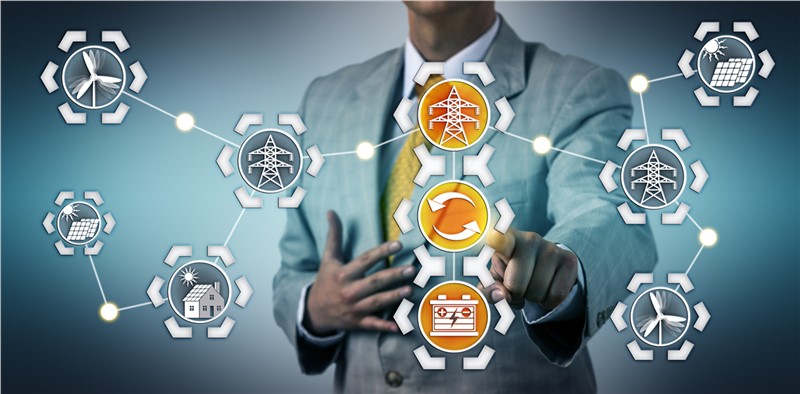Thursday 29 September 2022, Amsterdam

To use energy storage at the generational level, bulk storage is necessary. Currently, only pumped hydro, CAES, and BES are technically and economically viable. Pumped hydro uses only large-scale energy storage options. It excels at load levelling, provides blackstart functionality, and acts as an operational reserve. Given the limited potential for new pumped hydro projects, there is undoubtedly room for larger energy storage systems. CAES facilities start to look more and more appealing when examining options for a major energy storage facility. However, geological constraints place restrictions on the expansion of new pumped hydro and CAES. This will be advantageous for BES systems since they don't need much in the way of geology. BES systems are suitable for all applications that require energy storage. Although technically feasible, battery-based bulk energy storage options are less economical than pumped hydro and CAES. BES systems must compete in the small-scale range with more advanced technologies like SMES and supercapacitors. Numerous applications are financially feasible with battery storage technology.
How has COVID-19 had a significant negative impact on the Grid Scale Battery Storage Technologies Market?
The COVID-19 pandemic has had a negative and significant effect on a variety of businesses. The effect on the energy field has grown significantly. In comparison to the same month last year, the overall energy demand for electrical energy was found to be 10% lower in April 2020. As we all know, a country's economic growth rate may be accurately predicted by looking at the changing ratio of energy demand. The COVID-19 pandemic's effects on the demand for electric energy reached their peak in April 2020, and since then, demand has decreased globally and in Italy by around 20% and about 30%, respectively.
The COVID-19 pandemic has had one of the few beneficial consequences on the environment, with a 29 percent decrease in the rate of fossil fuels used to generate electricity as a result of lower energy demand. In 2020, the rate of electric energy production based on renewable sources increased by 46%, while the rate of carbon emissions reduced by around 20% as a result of this adjustment. Because the idea of sustainability is becoming increasingly important and well-known.
Creating a Disruption Proof Grid
A grid that can withstand disruptions is clearly necessary. Grid disruptors are being developed at an unequalled rate, and the growing value concentration and interconnectedness means that even a local disruption can have systemic effects that are costly in the millions of dollars and have an impact on millions of people. The continuous electrification of the economy is simply one element raising the frequency, cost, and risk of outages because the electric network is already prone to disruption. Until stakeholders take action, this will make the grid's basic weakness worse. A grid that is impervious to disruptions is built on energy storage.
A Vision for Energy Storage In 2025
Energy Storage Association believes that by 2025, it will be possible to add 35 GW of energy storage to the American grid. Without energy storage, ESA predicts a less than ideal outcome for the grid's dependability, resilience, and flexibility. The grid's physical constraints and the economy's ongoing electrification will increase the financial effect of increasingly frequent and severe outages. Utility companies and grid operators will invest billions of dollars in grid infrastructure over the coming years, collaborating with regulators to upgrade system capabilities and replace deteriorating assets.
Grid Integration of Renewable Energy Sources
Reliance on fossil fuels and emissions from the production of electricity can be decreased through the growing integration of renewable energy into the American energy system. However, when connected to the electric grid on a commercial scale, alternative energy sources' intermittent nature creates generation variability, which can pose operational and integration problems. These problems can be divided into two categories: short-duration (such as ramp-up and ramp-down) and long-duration (e.g., electricity energy time shift to better match renewable production with demand).
Forwarding Load for Energy Storage Technologies
Load following, or altering power output in response to a shifting equilibrium between energy supply and demand in a specific area, is necessary in response to fluctuations in power demand. The common resource for this service is a generation-based resource like a gas turbine, but load following necessitates partial-load operation, which consumes more fuel and emits more emissions than full output. Increased maintenance requirements are typically another consequence of variable output.
Energy storage solutions are perfect for load following because they can shield the rest of the grid from sudden and significant fluctuations in net supply relative to demand. Numerous storage technology types can function with incomplete output or input without affecting system performance. Furthermore, storage technologies can discharge or charge in a timely manner in response to an increase or decrease in load. In addition to load following, storage systems have the potential to be employed for additional purposes, such as electric energy time shift.
ASDReports.com contact: S. Koomen
ASDReports.com / ASDMedia BV - Veemkade 356 - 1019HD Amsterdam - The Netherlands
P : +31(0)20 486 1286 - F : +31(0)20 486 0216
 back to News
back to News


